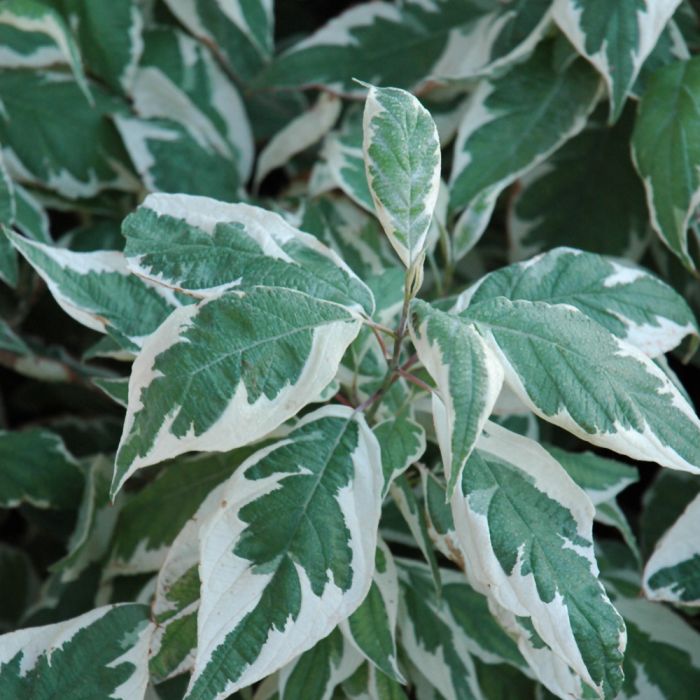Cornus, Siberian Dogwood 'Ivory Halo®'



- Sun Preference
- Full-Sun, Part-Sun
Description
A compact and very hardy shrub, well suited for color contrast in many garden applications; features very showy white-variegated foliage and brilliant red stems which show up well against the winter snow.
Minnesota's Largest Selection of Shrubs
Elevate your landscaping with Gertens' unmatched variety of shrubs! Selecting the right shrubs for your backyard can enhance its beauty and functionality. Consider factors like sunlight, soil type, and mature size when choosing shrubs. For sunny areas, flowering shrubs like roses or hydrangeas can add color and charm. In shady spots, opt for shrubs like azaleas or hostas. Evergreen shrubs provide year-round interest and privacy, while deciduous shrubs offer seasonal color changes. At Gertens, we offer a wide selection of shrubs to suit every backyard need.
Details
Height: 6 feet
Spread: 5 feet
Sunlight:![]()
![]()
Hardiness Zone: 3a
Description:
A compact and very hardy shrub, well suited for color contrast in many garden applications; features very showy white-variegated foliage and brilliant red stems which show up well against the winter snow
Ornamental Features
Ivory Halo Dogwood has attractive white-variegated green foliage throughout the season. The pointy leaves are highly ornamental but do not develop any appreciable fall color. It has clusters of creamy white flowers at the ends of the branches in late spring. It produces white berries in mid summer. The red branches are extremely showy and add significant winter interest.
Landscape Attributes
Ivory Halo Dogwood is a multi-stemmed deciduous shrub with a more or less rounded form. Its average texture blends into the landscape, but can be balanced by one or two finer or coarser trees or shrubs for an effective composition.
This is a high maintenance shrub that will require regular care and upkeep, and can be pruned at anytime. It has no significant negative characteristics.
Ivory Halo Dogwood is recommended for the following landscape applications;
- Accent
- Mass Planting
- Hedges/Screening
- General Garden Use
Planting & Growing
Ivory Halo Dogwood will grow to be about 6 feet tall at maturity, with a spread of 5 feet. It tends to fill out right to the ground and therefore doesn't necessarily require facer plants in front, and is suitable for planting under power lines. It grows at a fast rate, and under ideal conditions can be expected to live for approximately 20 years.
This shrub does best in full sun to partial shade. It is an amazingly adaptable plant, tolerating both dry conditions and even some standing water. It is not particular as to soil type or pH. It is highly tolerant of urban pollution and will even thrive in inner city environments. This is a selected variety of a species not originally from North America.
| SKU | Container Size |
| S0920 | #2 Container (2 Gallon) |
| S0930 | #5 Container (5 Gallon) |
* Not all container sizes may be available at this time. See store for details on specific container size availability.
More Information
| Gerten Grown Plants | Gerten Grown Plants |
|---|---|
| Sun Preference | Full-Sun, Part-Sun |
| Mature Height (Range) | 5 - 10 feet |
| USDA Hardiness Zone | 3, 4, 5, 6, 7 |
| Common Family Name | Dogwood |


